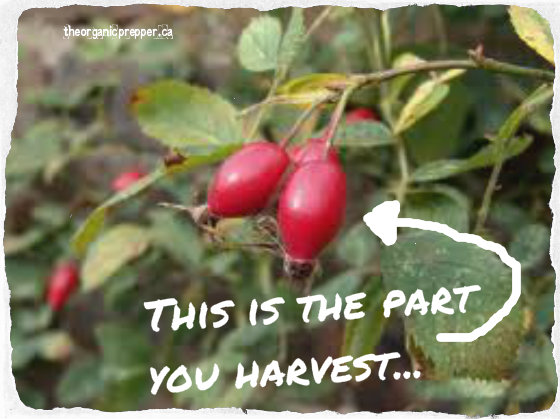The Nature’s Vitamins series
Sometimes the sources for elemental nutrients are, quite literally, right in your own back yard. This couldn’t be more true than for Vitamin C. Vitamin C is a vital nutritional component for a healthy diet and is the most recommended supplement in the United States. But skip the often toxic store-bought pills shaped like cartoon characters and turn to the garden for your daily dose! Store-bought vitamins often contain heavy metals, GMOs, artificial sweeteners, and other poisons.
Rose hips, the seed-filled pods at the base of a rose blossom, contain more than 60 times the dose of Vitamin C than is found in an equal amount of citrus fruit.

All rose hips are not created equally. Wild roses and old fashioned breeds of roses like the Rugosa Rose (Rosa rugosa) and the Dog Rose (Rosa Canina) have the highest concentration of Vitamin C. Be sure that the roses were not subject to the spraying of pesticides or other chemicals. Harvest rose hips after the first frost. They should be red and yield slightly to the touch.
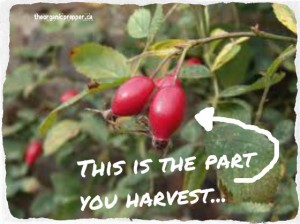
Fresh rose hips have the highest levels of vitamin C, but the best way to store rose hips for the winter is to dry them. Wash the harvested rose hips and allow them to air dry. Place them in the dehydrator whole for about 6-8 hours. When dry they will be shriveled and wrinkly.
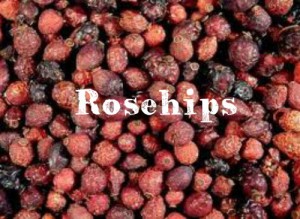
Using your food processor, pulse the dried rose hips until they are coarse chunks. Don’t over process them.
Using a mesh colander, sift the pulsed rose hips so that the little hairs and seeds fall through, leaving you with a lovely colander full of reddish-brown tangy-tasting bits of Vitamin C.
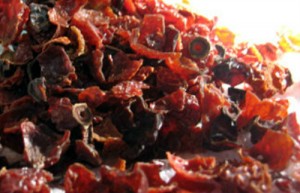
As a nutritional bonus, rose hips are also a good source of vitamins A, B-3, D and E, bioflavonoids, citric acid, flavonoids, fructose, malic acid, tannins and zinc.
How to Make Rose Hip Tea
Rose hips are most commonly used in teas. Commercially, most fruit or berry flavored teas contain rose hips. They give a tart, tangy flavor due to the naturally occurring ascorbic acid. Always prepare rose hips using non-aluminum cookware – aluminum destroys the vitamin C content.
- To make tea from fresh rose hips, steep 2 tablespoons of rose hips in a cup of boiling water for 10 minutes.
- To make tea from dried rose hips, steep 2 teaspoons of rose hips in a cup of boiling water for 15 minutes.
Rose Hip Jam
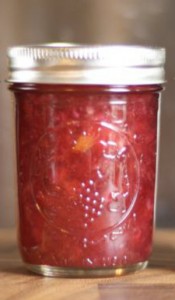
Ingredients
- 8 cups of washed rose hips
- 1/4 cup of lemon juice
- 6 cups of water
- 5 cups of turbinado sugar
- 1 package + 2 tbsp of no-sugar needed pectin
Directions
- With a sharp paring knife, cut the rose hips in half, then remove the seeds and the “hairs” from the inside of the halves.
- Use a food processor to roughly chop the rose hips. (You’ll end up with about 4-5 cups of rose hip halves.)
- In a large non-aluminum pot, add the water, lemon juice, and rose hips. Bring this to a hard boil, uncovered, for about 30 minutes to cook down the rose hips.
- In a small bowl, use a fork to mix ¼ cup of the sugar with one packet of pectin.
- Stir the pectin/sugar mixture into the rosehip liquid.
- Boil for 1-3 minutes, then TEST YOUR JAM with a spoon from the freezer. If it is not the right consistency, add the extra 2 tbsp of pectin and boil for another two minutes, then retest. Repeat until your jam has reached the desired thickness. (Be sure to skim off and discard foam throughout this step.)
- Ladle the jam carefully into your awaiting (sanitized) jars, wipe the rims and cap your jars with snap lids and rings.
- Process in a water bath canner for 10 minutes, making adjustments for your altitude.

source: Daisy Luther

